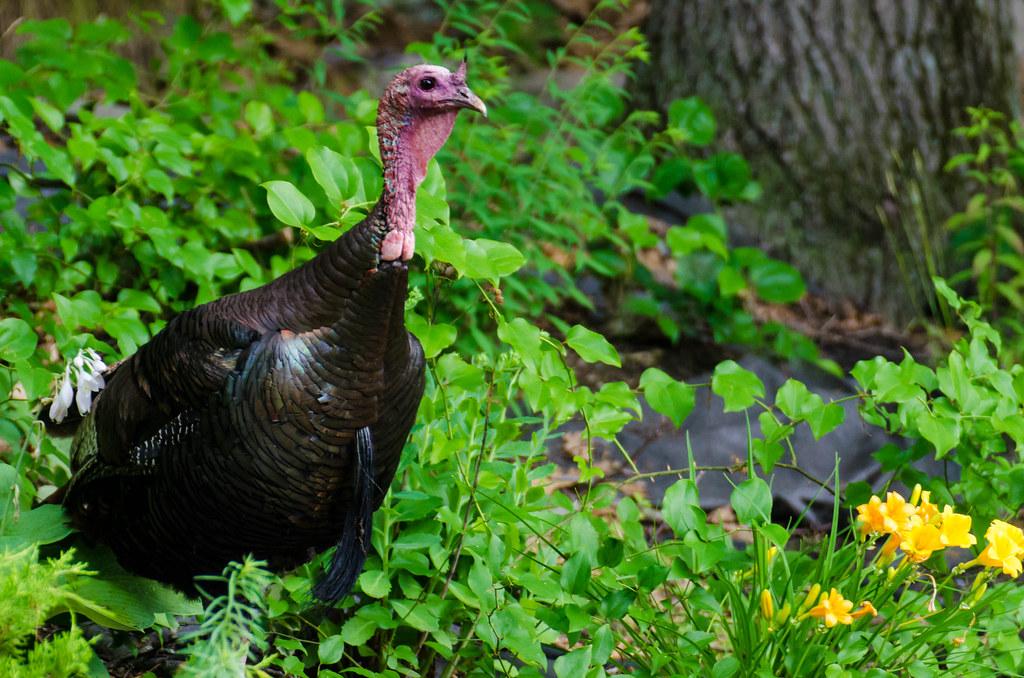
Turkey hunting is a thrilling pursuit that demands precision and skill. Whether you’re an experienced hunter or a novice looking to take on the challenge, mastering the art of using a turkey call is a crucial skill to have in your arsenal. From mimicking the distinct sounds of a turkey to strategically luring them in, utilizing a turkey call can greatly enhance your chances of a successful hunt. In this article, we will provide a comprehensive guide on how to effectively use a turkey call, equipping you with the knowledge and techniques necessary to attract those elusive gobblers like a seasoned pro. So, grab your call and let’s dive into the intricacies of this powerful hunting tool.
Choosing the Right Turkey Call
Using a Turkey Call: Turkey Calling Techniques Explained
When it comes to turkey hunting, the right turkey call can mean the difference between bagging a trophy turkey or going home empty-handed. A skilled turkey caller can effectively communicate with these elusive birds and entice them into range. So, whether you’re a seasoned turkey hunter or a beginner, mastering the art of using a turkey call is essential. Here are some key tips and techniques to help you choose and use the right turkey call.
1. Know the Different Types of Turkey Calls
Before selecting a turkey call, it’s crucial to understand the different types available:
- Box Calls: These calls are made from a rectangular wooden box and produce a range of sounds, from soft purrs to loud yelps.
- Pot Calls: Also known as friction calls, pot calls consist of a pot or pan and a striker. By rubbing the striker against the pot’s surface, you can imitate various turkey sounds.
- Diaphragm Calls: These calls are inserted into the mouth and controlled by tongue and airflow. Diaphragm calls require practice to master, but they produce realistic turkey vocalizations.
Choosing the right type of call depends on your personal preference, as well as the hunting situation and the sounds you aim to replicate.
2. Determine the Right Sound
Once you’ve selected the type of turkey call, it’s essential to understand the different sounds you can produce. The key sounds you’ll want to master are:
- Yelps: These are the most versatile turkey vocalizations and are used to grab a turkey’s attention or locate them in the wild.
- Cutts and Cackles: These excited calls are made by rapidly changing the pitch while calling and indicate a hen’s excitement or alarm.
- Purrs and Clucks: These soft, subtle sounds are used to reassure turkeys and keep them calm.
3. Practice and Perfect Your Calling Technique
Like any skill, using a turkey call requires practice to become proficient. Before heading out into the field, spend time honing your calling technique. Start by practicing simple yelps, clucks, and purrs. You can find an array of online tutorials or even invest in instructional DVDs to learn from experienced turkey callers.
Consider recording yourself and comparing it to recordings of real turkeys to gauge your progress. Experiment with different cadences and volumes to add realism to your calls. Don’t be discouraged if it takes time to master the different sounds; persistence is key.
4. Learn From Experienced Hunters
If possible, seek guidance from experienced hunters or join turkey hunting forums or clubs. Learning from seasoned individuals can provide invaluable insights and tips to improve your turkey calling technique. They can share their knowledge on specific calls, hunting strategies, and even how to read turkey behavior. Engaging with the hunting community can offer a wealth of information and support.
Remember, mastering the art of using a turkey call takes time and dedication. By understanding different types of calls, familiarizing yourself with turkey sounds, practicing your technique, and seeking guidance from experienced hunters, you’ll increase your chances of success in the thrilling world of turkey hunting.

Mastering Basic Techniques for Turkey Calling
For those who love the thrill of turkey hunting, is essential. Turkey calling is a skill that allows hunters to communicate with turkeys to attract them within close shooting range. Whether you’re a beginner or an experienced hunter looking to refine your calling skills, this post will guide you on how to use a turkey call effectively.
Understanding the Different Types of Turkey Calls
Before diving into how to use a turkey call, it’s important to be familiar with the various types available. Turkey calls come in different styles, including box calls, slate calls, mouth calls, and push-button calls. Each type produces a unique sound that mimics the vocalizations of a turkey, such as yelps, clucks, purrs, and gobbles. Experiment with different calls to find the one that suits your style and produces the most convincing turkey sounds.
Proper Hand Placement and Grip
When using a turkey call, your hand placement and grip play a vital role in producing accurate and realistic sounds. For box calls and push-button calls, hold the call against the palm of your hand with your fingers placed lightly on top. With slate calls, ensure your thumb is positioned securely against the call surface for better control. Mouth calls require a different technique, where you’ll place the reeds against the roof of your mouth, using your tongue and breath to manipulate the sound.
Mastering the Basic Calls
Learning the basic turkey calls is crucial for effective hunting. The key calls to master include yelping, clucking, purring, and gobbling. The yelp is the most versatile call and is typically used to grab the turkey’s attention. Clucks are short, low-pitched calls that indicate contentment, while purrs are soft, rolling sounds that signify relaxation. Gobbling is a loud, booming call made by male turkeys to attract females. Practice these calls in the field and fine-tune your technique to achieve realistic turkey sounds.
Using Turkey Calls in the Field
Now that you understand the different types of calls and have practiced the basic techniques, it’s time to take your skills into the field. When using a turkey call, always remember that less is more. Start with soft yelps to pique the turkey’s curiosity, gradually increasing the volume and intensity if needed. Make sure to mimic the natural rhythm and cadence of a turkey’s calls. Incorporate pauses between your calls to imitate the breaks a turkey would take to listen for a response. Patience is key, as it may take time for a turkey to respond, so maintain proper calling etiquette and remain still and silent between calls.
is an ongoing process that requires practice, patience, and field experience. Remember to respect hunting regulations and be safe while using turkey calls in the field. With dedication and honed skills, you’ll be well on your way to becoming a master turkey caller and increasing your chances of a successful hunt.

Advanced Techniques for Realistic Turkey Calls
Mastering the art of turkey calling can greatly increase your chances of a successful hunt. While basic turkey calls can be effective, using advanced techniques can take your skills to the next level. In this post, we will explore some advanced techniques for creating realistic turkey calls that will attract even the most cautious gobblers.
1. Mixed Call Sequences
Don’t limit yourself to using a single turkey call. Instead, experiment with a combination of calls to create a more realistic sound. For instance, you can start with soft yelps on a box call, followed by some purrs using a slate call, and then finish with loud cutts on a mouth call. Mixing different calls mimics the natural behavior of a flock and can fool even the wariest tom.
2. Vary Your Volume and Cadence
Turkey vocalizations are not always loud and frantic. To sound like a real turkey, you need to vary your volume and cadence. Start with soft calls to mimic contentment or curiosity and gradually increase the volume and speed to replicate excitement or warning calls. This realistic variation will grab the attention of gobblers and make them believe there’s a live hen nearby.
3. Mute and Purr Technique
The mute and purr technique is a sneaky method that can fool even the most experienced gobblers. Using a friction call, produce a loud yelp or cutt, and then immediately dampen the sound by placing a finger over the call’s soundboard. Follow this with soft purrs by purring into the call while keeping it muted. This combination of loud and soft sounds imitates a moving hen, enticing toms to come closer.
4. Use Gobble Shakers
Gobble shakers are handy tools that can create incredibly realistic gobble sounds. These shakers consist of a hollow tube with a reed or latex membrane. By shaking them, you can produce gobble sounds that carry far and wide. Incorporating gobble shakers into your calling sequence can attract dominant gobblers and challenge their territorial instincts.
5. Practice, Practice, Practice
Perfecting advanced turkey calling techniques requires practice. Set aside some time each day to work on the different calls and sequences. Listen to recordings of real turkeys and try to mimic their sounds. The more you practice, the more confident and realistic your calls will become. Remember, consistency is key, so be sure to stay sharp and focused when out in the field.
| Day | Technique |
|---|---|
| Monday | Box Call – Soft Yelps |
| Tuesday | Slate Call – Purring |
| Wednesday | Mouth Call – Loud Cutts |
| Thursday | Friction Call – Mute and Purr |
| Friday | Gobble Shaker – Gobble Calls |
By incorporating these advanced techniques into your turkey calling repertoire and dedicating time to practice, you’ll become a proficient turkey caller capable of luring in those elusive gobblers. Remember to always practice good hunting ethics and abide by local hunting regulations. Happy hunting!

Tips for Effective Turkey Call Placement
Turkey calls are essential tools for a successful hunt, but knowing where and how to place them can greatly enhance their effectiveness. Below are some tips to help you make the most of your turkey calls and increase your chances of luring in these elusive birds.
1. Location is Key
When it comes to turkey call placement, choosing the right location is crucial. Look for areas with good visibility and ample cover, such as the edge of a field or a wooded opening. These spots provide turkeys with both security and an opportunity to respond to your calls.
2. Consider the Wind
Pay attention to the wind direction when positioning your turkey calls. Turkeys have keen senses, particularly their sense of smell. Always place your calls downwind from your chosen hunting spot to avoid alerting the birds to your presence.
3. Be Mindful of Distance
Turkeys have exceptional hearing, so it’s important to place your calls within a realistic distance. If your calls are too far away, they may not hear them or perceive them as a threat. Conversely, placing them too close can create suspicion. Aim for a distance of 50-100 yards from your hunting position.
4. Go Natural
Turkey calls mimic the sounds turkeys make, so it’s essential to choose appropriate natural sounds for your hunting area. Pay attention to the types of calls turkeys in your region are most responsive to, and select calls that closely replicate those sounds. This will increase the chances of attracting their attention and luring them in.
5. Experiment with Placement
Don’t be afraid to experiment with turkey call placement to find what works best in your specific hunting area. Move your calls around, adjusting their position until you find the sweet spot where turkeys consistently respond. Remember that turkeys may react differently to different calls, so try different combinations to see what elicits the best response.

Understanding Turkey Call Sounds
A key element in understanding turkey hunting is mastering the art of using a turkey call. Turkey calls are essential tools that mimic the sounds turkeys make, allowing hunters to attract their prey. Whether you are a beginner or an experienced hunter, knowing how to use a turkey call effectively can greatly increase your chances of success in the field. In this post, we will guide you through the process of and using them to your advantage.
Types of Turkey Calls:
Before diving into the intricacies of turkey call sounds, it’s important to first understand the different types of turkey calls available. The most common types include box calls, slate calls, diaphragm calls, and push-button calls. Each type produces different sounds, and depending on the turkey behavior you want to mimic, you can choose the most appropriate one for your hunting situation.Decoding Turkey Call Sounds:
Turkeys produce various sounds for different purposes, such as communicating with other turkeys, attracting mates, or warning others of danger. Understanding these sounds will enable you to effectively communicate with turkeys and increase your chances of luring them in. The different turkey sounds you will come across include yelps, clucks, cuts, purrs, and gobbles. Each sound has a unique purpose and meaning, so familiarize yourself with them to create a convincing call.Mastering the Techniques:
Once you have chosen the right type of turkey call and learned the various sounds turkeys make, it’s time to master the techniques of producing those sounds. The key lies in controlling your breath and hand movements to create authentic and natural calls. Practice and experimentation are vital when perfecting turkey calls, as it takes time to find the right rhythm, pitch, and cadence. Remember, persistence is key in honing your skills.Utilizing Call Patterns:
Knowing when to use specific turkey call sounds is as important as knowing how to produce them. By utilizing different call patterns, you can create a realistic soundscape that will grab the attention of nearby turkeys. These patterns include the fly-down cackle, assembly call, clucking and purring, cutting and yelping, and the gobble. Understanding the right time to use each call pattern will significantly improve your chances of attracting turkeys within shooting range.Practicing in the Field:
Once you have learned the basics of turkey call sounds and techniques, the best way to refine your skills is through practice in the field. Observing and imitating the vocalizations of wild turkeys is crucial for developing a natural and convincing call. Listen to the sounds of turkeys in your hunting area, analyze their behavior, and try to recreate those sounds with your call. Remember to be patient, as it may take time to get the desired results.
In conclusion, is a fundamental aspect of successful turkey hunting. By familiarizing yourself with the various turkey sounds, mastering the techniques, and utilizing different call patterns, you can enhance your chances of luring turkeys within your shooting range. Practice, patience, and persistence are key ingredients to refining your turkey call skills. So get out there, immerse yourself in the world of turkeys, and let your calls do the talking. Happy hunting!
Q&A
Q: What is a turkey call and why is it used?
A: A turkey call is a device or technique used by hunters to imitate the vocal sounds of turkeys, in order to attract them towards the hunter’s location. It is primarily used during turkey hunting to increase the chances of a successful hunt.
Q: What are the different types of turkey calls available?
A: There are several types of turkey calls, including box calls, slate calls, diaphragm calls, and push-button calls. Each type produces a unique sound and requires different techniques to operate effectively.
Q: How do box calls work and how are they used?
A: Box calls consist of a rectangular-shaped wooden box with a lid that serves as a friction surface. By sliding the lid across the surface of the box, it creates the sound of a turkey. To use a box call, hold the box in one hand and use the other to drag the lid across the box’s surface, altering the speed and pressure to produce different turkey sounds.
Q: What is the technique for using a slate call?
A: A slate call, also known as a pot call, consists of a round plastic or wooden disc (slate) with a striker (wooden or plastic) used to produce sound. To use a slate call, hold the pot in one hand and hold the striker like a pen in the other hand. With light pressure, slowly move the striker across the slate surface in curved motions to create realistic turkey sounds.
Q: How does one use a diaphragm call?
A: Diaphragm calls, or mouth calls, are small devices worn inside the mouth. They consist of a latex or similar material stretched across a frame with reeds or slits. Using diaphragm calls requires practice to properly form an airtight seal in the mouth and create turkey sounds by controlling airflow, tongue placement, and vocalizations.
Q: What about push-button calls, how are they operated?
A: Push-button calls are simple and easy to use. They typically consist of a small wooden or plastic housing with a button or peg on the top. When the button is pushed or the peg is moved, it creates friction against a surface, producing the desired turkey sound. Push-button calls require minimal practice and can imitate a range of turkey vocalizations.
Q: Are there any turkey calling tips worth remembering?
A: Absolutely! Here are a few key tips to keep in mind: practice regularly to improve your calling technique, start with basic calls before attempting more complex ones, pay attention to your surroundings and adapt your calls accordingly, and always remember to call softly and intermittently to avoid spooking the turkeys.
Q: How important is understanding turkey behavior in using a turkey call?
A: Understanding turkey behavior is crucial when using a turkey call. Studying the distinct vocalizations, body language, and habits of turkeys will greatly enhance your ability to effectively communicate with them using a call. By mimicking their sounds and behavior accurately, you increase your chances of success during a turkey hunt.
Q: Where can one learn more about using turkey calls?
A: There are many resources available for those seeking to learn more about using turkey calls. Online tutorials, instructional videos, hunting forums, and experienced hunters in your community can provide valuable insights and guidance. Additionally, books and publications focused on turkey hunting can serve as comprehensive references to enhance your knowledge and skills. In conclusion, mastering the art of using a turkey call can greatly enhance your hunting experience. By understanding the different types of turkey calls and how they work, you can successfully attract these elusive creatures and increase your chances of a successful hunt. Remember to practice your calling techniques, experiment with different calls, and employ the appropriate call for the specific situation you find yourself in. With time and patience, you will develop the skills necessary to effectively communicate with turkeys and bring them within your range. So, gear up, head out to the hunting grounds, and put your newfound knowledge to the test. Good luck and happy hunting!






